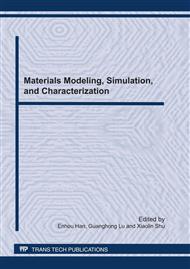p.226
p.235
p.239
p.245
p.255
p.260
p.269
p.276
p.282
Application of Secondary Electron Composition Contrast Imaging Method in Microstructure Studies on Cathode Materials of TWT
Abstract:
The study of the secondary electron composition contrast imaging method have been developed with a conventional scanning electron microscope (SEM) equipped with ultra-thin window energy dispersive X-ray spectrometer (EDS). On the basis of the study of the principle of secondary electron emission, secondary electron composition contrast imaging method has been investigated, and the ranges of its application were also discussed. This method was applied in the microstructure studies on cathode materials of TWT (traveling wave tube). The results showed that, compared with backscattered electron image, the secondary electron image could also reveal composition contrast well in certain conditions. Furthermore, the resolution of secondary electron composition contrast image is higher. In some cases, the secondary electron image could distinguish impurities which might bring wrong results. In the microstructure studies on cathode materials of TWT, compared with backscattered electron image, secondary electron composition contrast imaging method is reasonable and practicable.
Info:
Periodical:
Pages:
255-259
Citation:
Online since:
June 2011
Authors:
Keywords:
Price:
Сopyright:
© 2011 Trans Tech Publications Ltd. All Rights Reserved
Share:
Citation:


